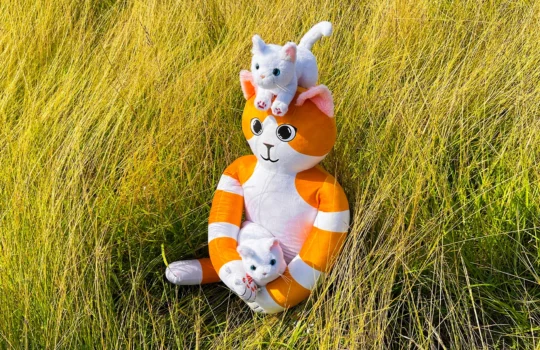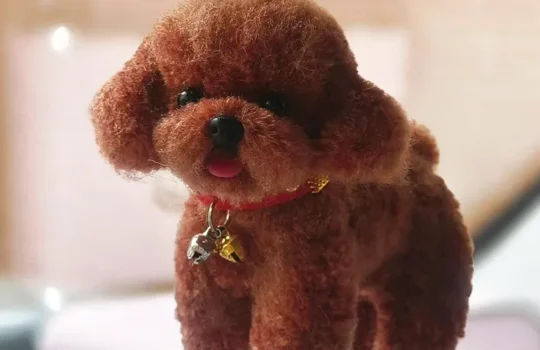Pet Clone: Turn Your Pet into a Plush Toy
For many pet owners, their pets are more than just animals—they are family. Pets bring joy, comfort, and unconditional love into our lives. However, as much as we cherish them, there are moments when we want to preserve their presence in a tangible way. One innovative solution gaining popularity is the concept of a pet clone. This method allows you to transform your beloved pet into a customized plush toy, capturing their unique features and personality. Not only does this serve as a playful keepsake, but it also offers an emotional connection for pet lovers, both now and in the future.
Additionally, creating a pet clone involves combining creativity, technology, and craftsmanship. By using photos, measurements, and sometimes videos, artists can replicate your pet’s appearance in a soft, huggable form. Whether you have a dog, cat, rabbit, or other furry friend, a plush toy version of your pet can serve as a comforting reminder and a unique piece of art in your home.
What is a Pet Clone?
Definition and Concept
A pet clone is not a living duplicate of your pet. Instead, it is a crafted representation, typically in the form of a plush toy or figurine, that closely mimics the appearance and sometimes behavior of your pet. By accurately capturing details such as fur patterns, color, facial features, and even body posture, these replicas offer a highly personalized connection to your pet.
Not only does this process provide a creative outlet for pet owners, but it also serves a deeper purpose. For example, families grieving the loss of a pet can find comfort in holding a tangible, lifelike memory. Consequently, the concept of a pet clone blends artistry with emotional value.
Check out the pet cloning service of Fimico to gain a better understanding of its features: https://fimicoworld.com/product-category/pet-clone/
How Pet Clones Work
The process of creating a pet clone generally involves several steps:
- Photographing Your Pet: Multiple high-quality images from various angles ensure accurate replication.
- Selecting Materials: Soft, durable fabrics are chosen to match fur color and texture.
- Crafting the Prototype: Skilled artisans or digital sculptors recreate the pet’s features in a design.
- Final Assembly: The plush toy is sewn, stuffed, and detailed to match the original pet.
In some cases, companies use 3D modeling and printing to improve accuracy. As can be seen, the process is both technical and artistic, ensuring that the final product feels personal and realistic.
Why Pet Clones Are Popular
Emotional Connection
For most pet owners, pets are integral family members. Losing a pet can be devastating, and a pet clone provides a comforting, physical reminder. This is especially valuable for families who wish to keep their pet’s memory alive. In fact, many owners report feeling emotional relief when holding a plush toy that mirrors their pet.
Additionally, pet clones can strengthen the bond between children and pets. Children often respond positively to soft, lifelike toys, which can help them understand empathy and the concept of memory preservation.
Unique Gifts
Another key point is that pet clones make excellent personalized gifts. Whether for birthdays, holidays, or special occasions, gifting a plush version of someone’s pet is thoughtful and unique. Coupled with a heartfelt note or custom packaging, these gifts leave lasting impressions.
Choosing the Right Pet Clone
Material Selection
The choice of materials significantly affects the look and feel of the plush toy. High-quality synthetic fibers can replicate fur texture accurately, whereas softer fabrics provide comfort for hugging. As a result, selecting the right materials is essential to achieving realism and durability.
Customization Options
Most companies offer varying levels of customization. Some allow specific poses, while others let you include accessories or clothing your pet commonly wears. This attention to detail ensures that your plush pet clone not only resembles your pet but also captures their personality.
Fimico’s pet cloning service can try the best to restore the appearance of the pet based on the pictures and videos provided by the customers. There are two materials available: chenille stem and wool felt. While maintaining high quality, it maximizes the restoration of the pet’s original appearance.
Custom Miniature Pet Clone Chenille Stem Stuffed Animal Service: Custom Miniature Pet Clone Chenille Stem Stuffed Animal Service – Fimico
Custom Pet’s Head Pet Clone Wool Felt Stuffed Animal Service: Custom Pet’s Head Pet Clone Wool Felt Stuffed Animal Service – Fimico
Custom Pet Clone Wool Felt Stuffed Animal Service: Custom Pet Clone Wool Felt Stuffed Animal Service – Fimico
Steps to Create Your Own Pet Clone
Step 1: Capture Clear Images
High-resolution photos are vital. Take pictures from multiple angles, including front, side, and back views. Ensure lighting is sufficient to highlight fur patterns and unique markings.
Step 2: Choose a Reliable Vendor
Research companies specializing in pet clones. Check reviews, previous work, and guarantees. Vendors who provide progress updates are preferable, as they ensure transparency and quality control.
Step 3: Personalize Features
Decide on customization options such as eye color, fur texture, pose, and accessories. Some companies like Fimico allow you to submit special requests to replicate quirks like floppy ears or tail curls.
Step 4: Review the Prototype
Before final assembly, review a prototype or digital model. This allows corrections and ensures satisfaction. Consequently, the final product aligns closely with your vision.
Caring for Your Pet Clone
Once you receive your pet clone, proper care ensures longevity. Here are some tips:
- Dust Regularly: Lightly brush or vacuum the toy to maintain fur texture.
- Spot Cleaning: Use mild soap and water for small stains.
- Avoid Direct Sunlight: Prolonged exposure may fade colors.
- Store Safely: Keep away from pets if possible, as real pets may damage the plush toy.
By following these steps, you can preserve your pet clone for years.
Real-Life Examples
Several pet owners have shared their experiences with pet clones:
- Case Study 1: A family lost their Labrador but commissioned a plush version that matched his coat pattern perfectly. They displayed it on a family shelf, providing emotional comfort.
- Case Study 2: A young girl received a pet clone of her cat as a birthday gift. The toy replicated the cat’s unique markings and playful expression. It became a favorite companion during times when the cat was unavailable.
Both cases highlight how pet clones go beyond mere toys—they serve as emotional keepsakes and personalized art.
Conclusion
All in all, creating a pet clone offers a meaningful way to celebrate your pet’s uniqueness. By transforming a beloved animal into a lifelike plush toy, you preserve memories, strengthen emotional bonds, and create a one-of-a-kind keepsake. Whether as a personal memento or a thoughtful gift, a pet clone combines artistry, technology, and sentiment in a single creation.
For anyone considering a pet clone, the process involves careful selection of materials, professional craftsmanship, and attention to detail. Following these steps ensures a final product that captures both the appearance and spirit of your cherished pet. Ultimately, a pet clone provides joy, comfort, and a lasting tribute to the animals who enrich our lives.


